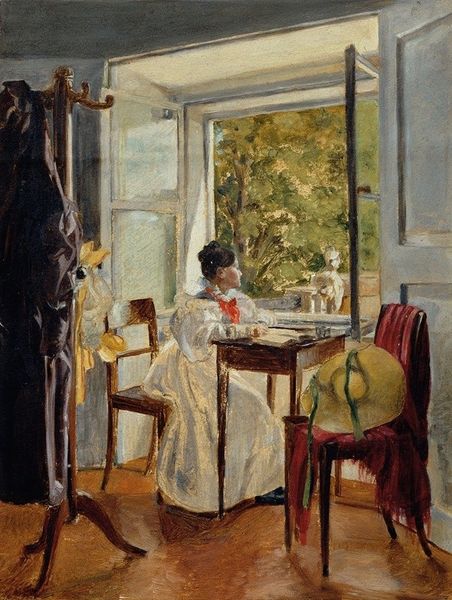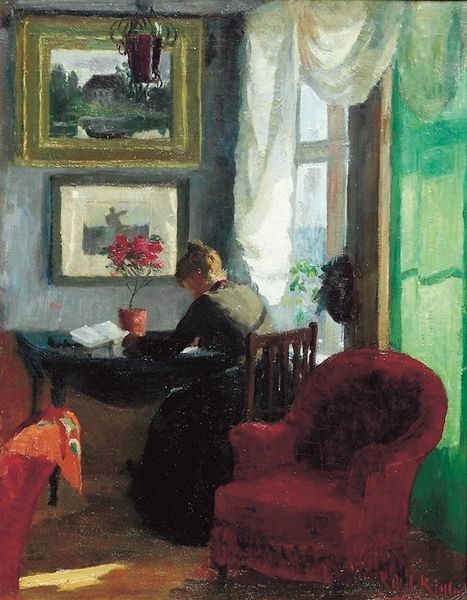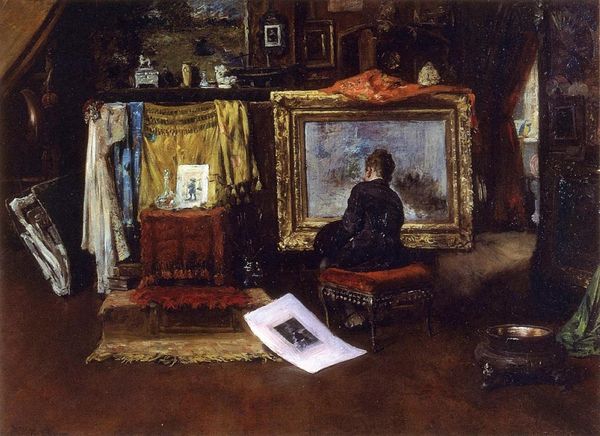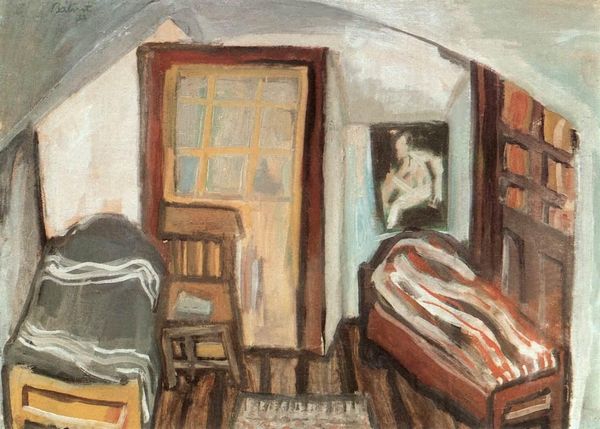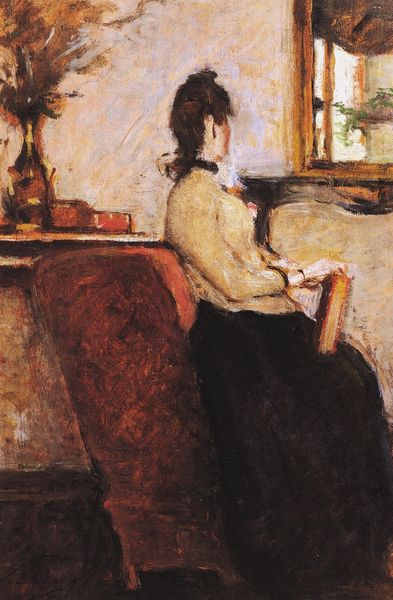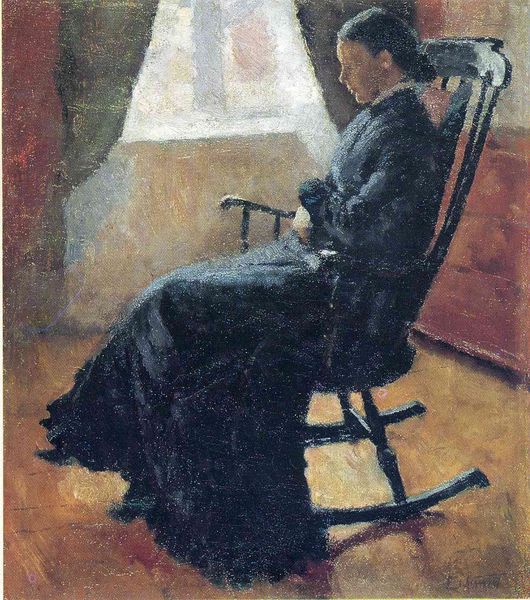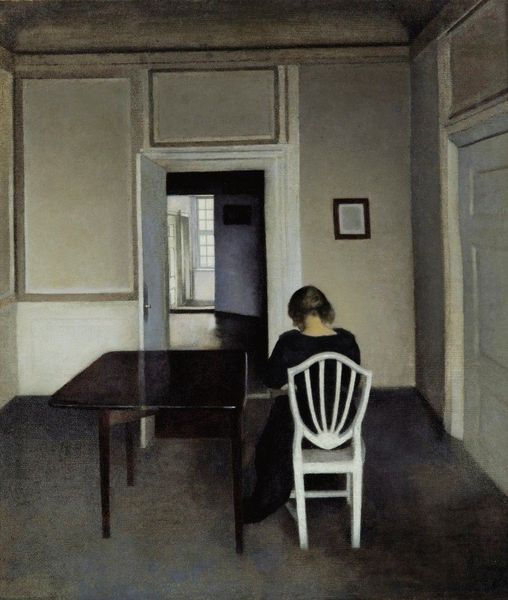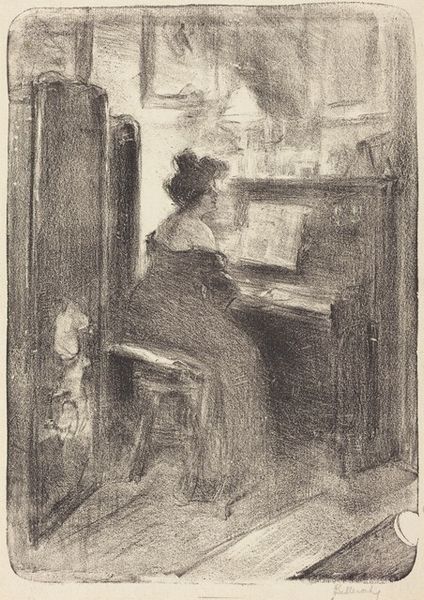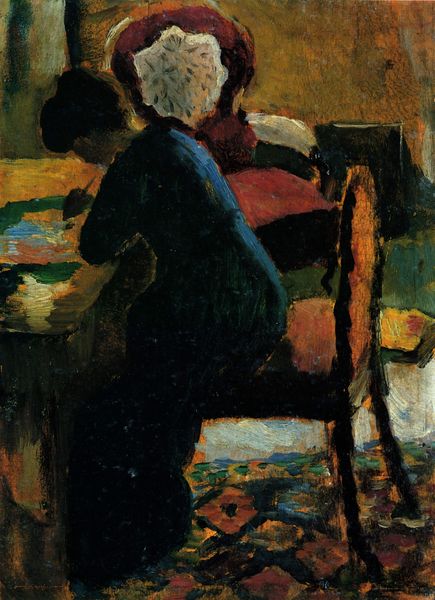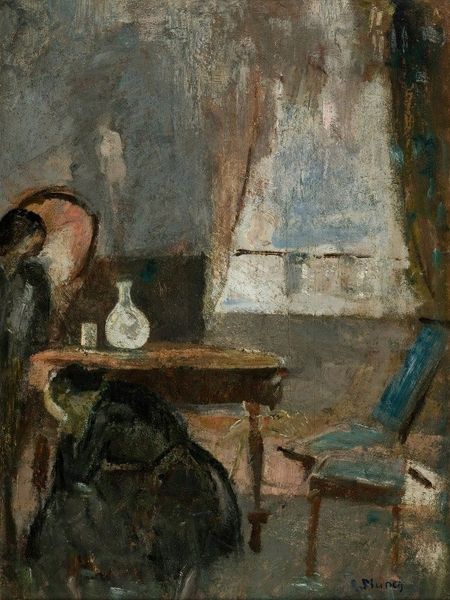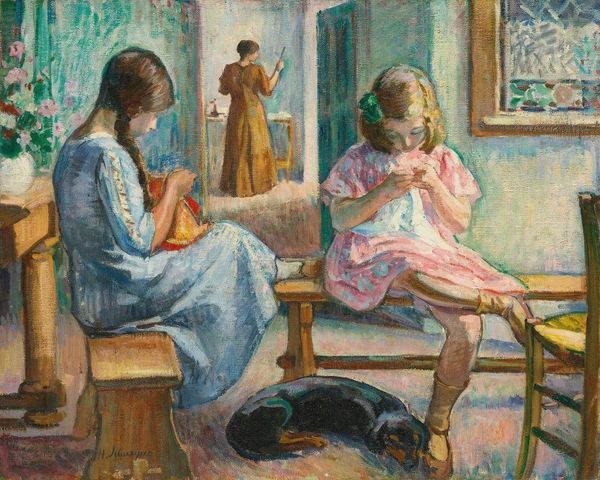
painting, oil-paint
#
portrait
#
painting
#
impressionism
#
oil-paint
#
furniture
#
oil painting
#
intimism
#
genre-painting
Copyright: Public domain
Curator: This is a work simply called "The Window" by Édouard Vuillard. Painted with oils, it immediately whispers of hushed domestic moments, doesn’t it? Editor: Absolutely. It’s…quiet. The colors are muted, almost drab, and yet there’s an undeniable sense of intimacy. It feels like walking into a room where a deep thought has just settled. Curator: Vuillard really excels at capturing those in-between spaces. He was a master of Intimism, which celebrated those kinds of private, quiet moments. It feels like a stolen glance, capturing the everyday rituals of bourgeois life through an artist's particular, bourgeois, lens. Editor: I see what you mean. There's a figure looking into the window. Is it male or female? It’s hard to tell, almost like a ghostly visitation from beyond. What is that person holding? The eye keeps traveling from the outside in. I wonder if they're waiting. Curator: Possibly. The scene inside suggests a quiet domestic life; the woman’s posture is very contained. And that man at the window feels like a presence, like someone who's about to shatter her solitude, for good or ill. What’s interesting about this painting is the use of interior spaces as symbols for other interiority—that which is personal, but unsaid. Editor: This piece, as many by Vuillard, comes to us from the private apartments of Paris' bourgeoisie. Considering that its public unveiling was probably set in bourgeois social environments, I wonder about how the theme of introspection and privacy were received. Was it considered subversive in any way to reveal the private lives of a privileged social group? Curator: The late 19th-century public was quite sensitive to those sort of critiques, particularly during eras of stark class stratification and inequalities. Revealing quiet moments can have revolutionary undertones. So I wonder how paintings of Intimism allowed those kinds of reflections for public consumers who didn't participate in those forms of quietness or privilege. Editor: Yes, like peeking behind a curtain. What strikes me most is how Vuillard transformed what might seem ordinary – someone sitting by a window – into a profound contemplation on life's quiet moments, the unspoken dialogues we have with ourselves, our social and relational worlds. Curator: I think you are completely correct. Vuillard provides us the context, space, and subject to ask these question within ourselves.
Comments
No comments
Be the first to comment and join the conversation on the ultimate creative platform.


